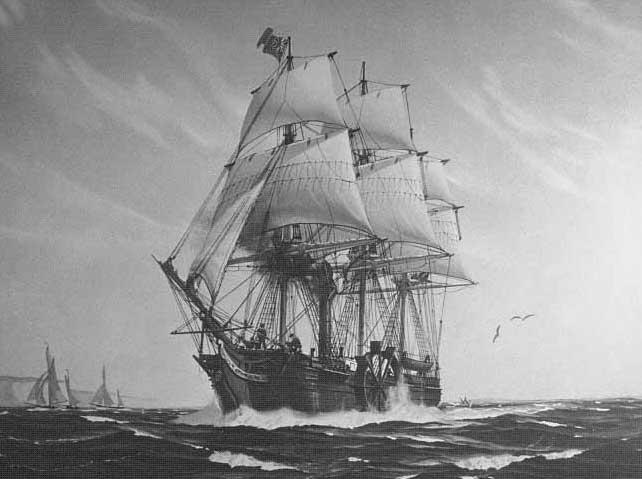1819 Savannah Crosses the Atlantic

At the end of May 1819, the "Savannah," equipped with a steam engine and paddle wheel, sailed from Savannah, Georgia for Liverpool, England. She arrived in Liverpool on June 20. This would slowly transform America, as both trade and immigrants could arrive more quickly and for less money.
The SS Savannah, built in 1818, was an innovative hybrid of a sailing ship and a steam-powered vessel. Originally constructed as a sailing ship, it was later equipped with a steam-powered paddle wheel, which was a novel feature at the time. The design allowed the paddle wheel to be retracted to reduce drag when the ship was under sail, and it was intended to be used primarily when there wasn't enough wind.
Captain Moses Rogers, who commanded the Savannah, planned an ambitious journey for the ship to cross the Atlantic Ocean. This proposal was met with skepticism by many, who referred to the ship as a 'steel coffin' due to doubts about the safety and feasibility of such a voyage. Despite the skepticism, President James Monroe expressed his support for the venture and sailed on the Savannah on April 14th as a show of endorsement.
On May 24th, the Savannah embarked on its historic voyage to Liverpool, England. The skepticism surrounding its journey was apparent, as it departed without any passengers.
The Savannah successfully arrived in Liverpool on June 20th, marking a significant event in maritime history. It became the first steamship to cross the Atlantic Ocean, although it primarily relied on its sails and used steam power intermittently. This achievement demonstrated the potential of steam-powered maritime travel and marked a milestone in the evolution of naval engineering.
 >
>